How to Effectively Measure the Growth of Web 3 Projects?
It is evident that there are essential differences in the growth logic between Web 2 and Web 3. After communicating with multiple exchanges, project parties, and investment institutions, I realized that in the high-cost traffic world of Web 3, the traditional AARRR "funnel model" is becoming ineffective—users are no longer prey waiting to be captured, but partners that need to be continuously attracted and maintained over the long term.
Thus, the rise of InfoFi appears particularly "Web 3 native." It transforms intangible assets such as market attention and brand reputation, which are difficult to measure, into tradable and priceable financial assets. It can be said that InfoFi showcases the genius of Web 3 marketing: focusing on truly core metrics.
However, the attention economy represented by InfoFi has also fallen into its own paradox: information overload and noise drowning out the signal. When attention is massively "commodified," user attention becomes even scarcer.
The real breakthrough lies in building a growth flywheel that starts with traffic and centers on user loyalty programs, transforming ordinary participants into loyal advocates for the brand, ultimately achieving self-driven and sustainable growth for the project—this is precisely the mechanism that the current Web 3 ecosystem needs most.
In this logic, Quest is no longer just a growth tool; it is also an important way for users to build on-chain identities, accumulate social capital, and capture early Alpha. It is reshaping the way traffic is distributed and user relationships, becoming a key bridge connecting projects and users.
Complete Web 3 Marketing Goal System
An interesting fact is that being a host on Pump.fun is far easier to "get rich overnight" than live streaming on Web 2 platforms—even though the former's traffic scale is far less.
Behind this is the power of token economics. Through the invisible bond of Meme, the connection between hosts and viewers is no longer a simple emotional bond but is tightly bound by shared expectations: breaking the circle. The more absurd and anti-traditional the content, the easier it is to harvest attention, and attention is the lifeline of Meme. This makes the live streaming ecosystem of Pump.fun resemble a large "digital coliseum," where the attention economy becomes the first law.
So, what should a successful Web 3 marketing campaign possess? How to establish brand awareness, create topics and curiosity among the target audience? And how to leverage incentives and culture to transform them into deep users?
Complete Web 3 marketing should be a closed-loop, multi-module interactive growth flywheel. InfoFi is a lever, the prediction market is a lever, Pump.fun's live streaming is a lever, and Quest is also a lever—they all achieve brand exposure and heat increase through refined traffic operations.
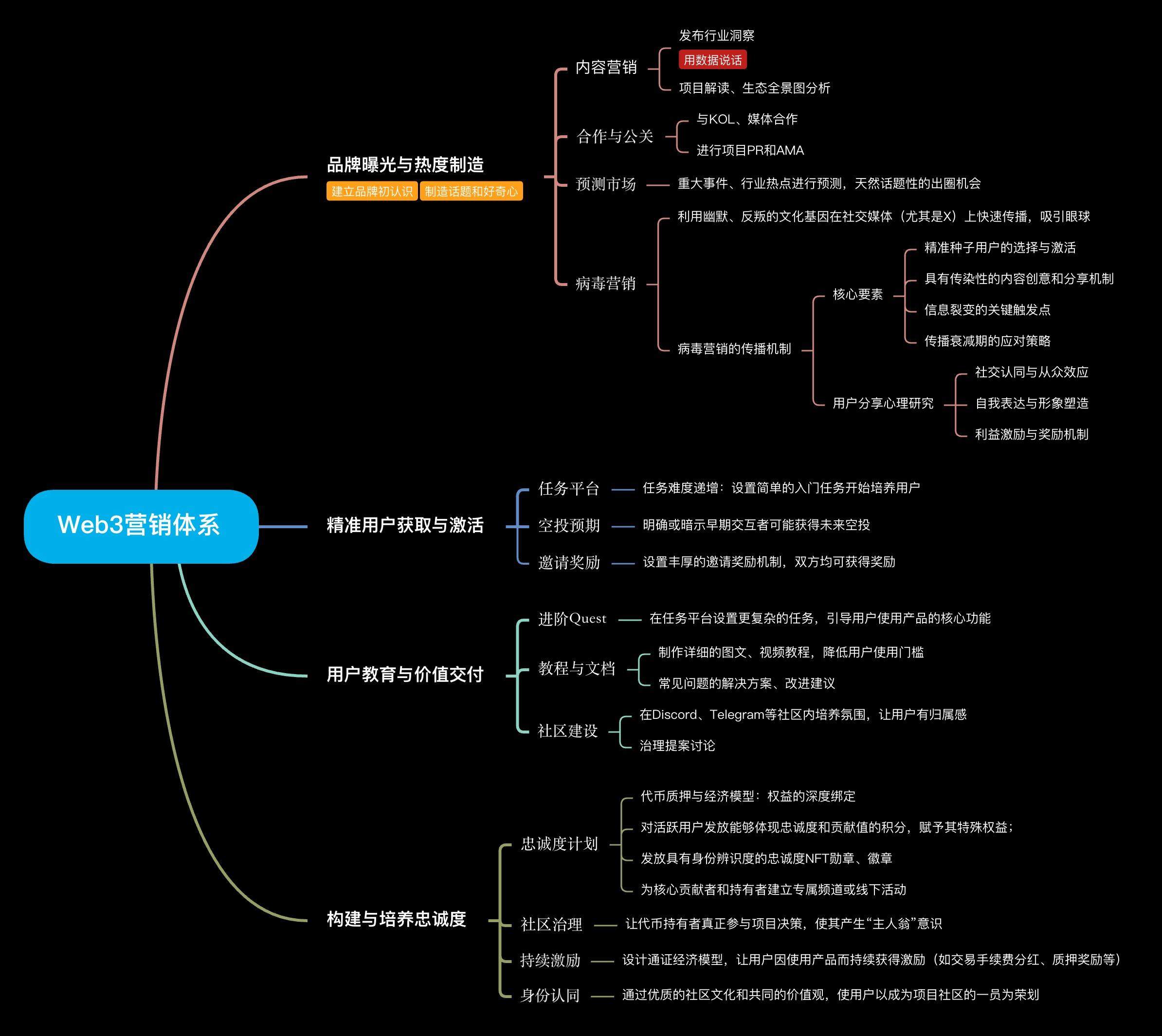
Among these levers, Quest may be the most effective tool for driving the marketing flywheel. Please note that the Quest mentioned here includes a series of incentivized operational verifications on the task platform, as well as on-chain transaction activities initiated by project parties.

How Does Quest Drive the Growth Flywheel?
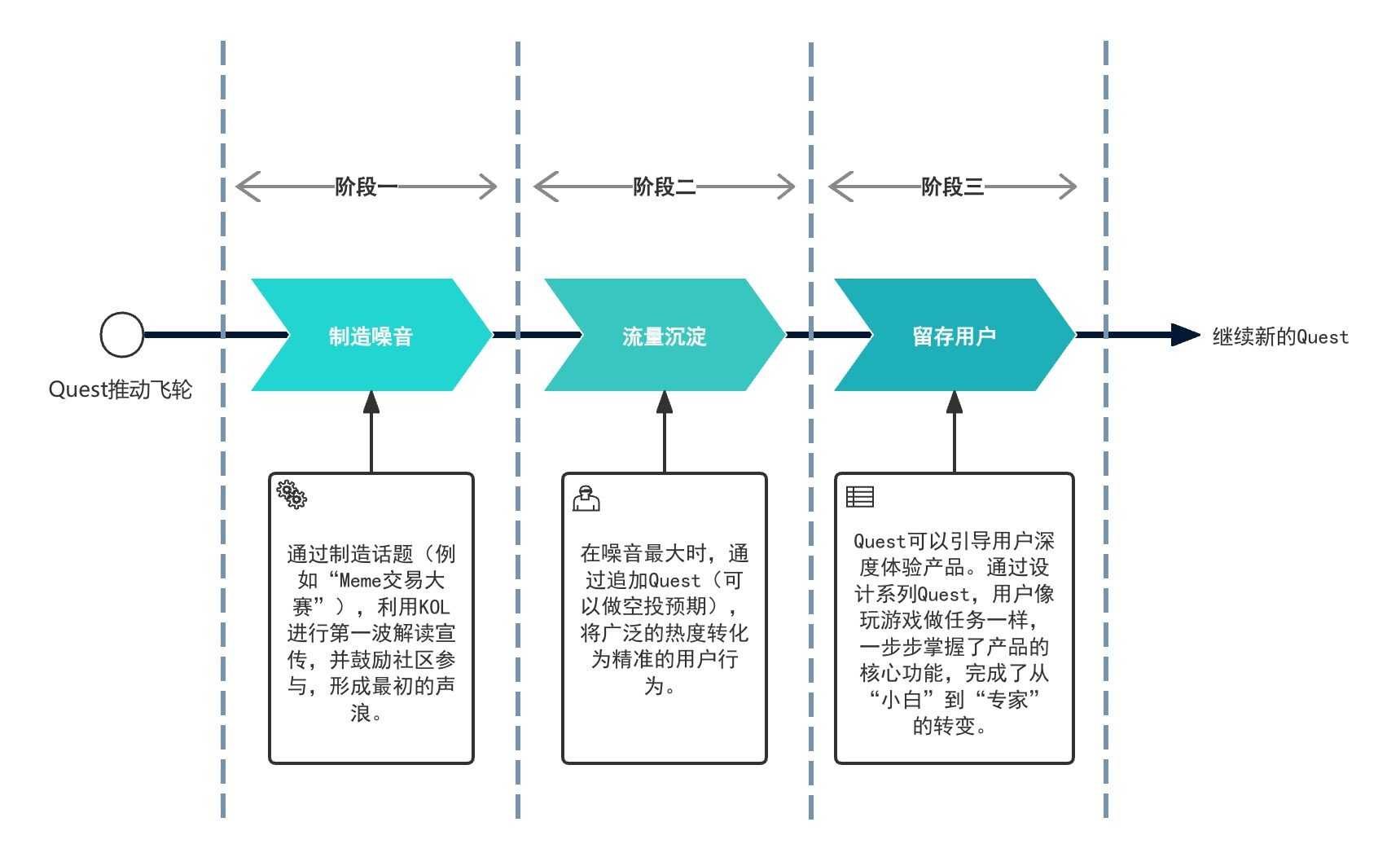
Quest is more efficient because it has a complete closed-loop system: from traffic introduction, demand capture, to gamified incentives, user retention, and sense of belonging construction.
It is not only a customer acquisition tool but also the foundational infrastructure for educating users, screening high-value contributors, and laying the groundwork for loyalty programs.
How to Create a Good Quest?
An excellent Quest can significantly enhance user retention and community activity. Data shows that a well-designed Quest can even bring a 300% increase in retention and double the interaction rate.
However, in reality, many Quests quickly lead to user aesthetic fatigue, causing participation to plummet. Homogeneous social tasks fail to evoke a genuine sense of identity, just like most of the low-traffic Quests on Galxe, which resemble countless silent live rooms on Pump.fun.
Taking the comprehensive and representative task platform TaskOn as an example, let's break down how to create an efficient Quest on a task platform.
TaskOn builds a complete Quest ecosystem from dimensions such as gamification mechanisms, narrative guidance, value-oriented task design, incentive systems, and data feedback.

Compared to other platforms, TaskOn's core advantages include:
1. Zero-Cost Startup and Data Export Freedom
Supports free Quest creation and provides complete data export functionality, helping project parties accurately analyze activity effectiveness;
2. Result-Oriented Performance Quest
Through dynamic point rewards and API interfaces, it tracks on-chain behavior, DApp registrations, and interaction data in real-time.
For example: Users earn 10 points for every $100 deposited, deeply binding the points system, ensuring that every participation receives corresponding rewards, enhancing community stickiness;
3. Automated Verification and Task Execution
Greatly improves tool usability and operational efficiency, optimizes user experience, and promotes user retention.
In this flywheel, setting effective Quests starts with clarifying goals: Is it to acquire new users? Increase participation? Or promote specific features? Successful Quests need to be goal-focused and have clear paths.
Next, brands need to clarify their core values and narrative logic, integrating these elements into task design so that users can perceive the brand's connotation through participation.
Let's analyze a few specific successful Quest paths.
1. SuperVol Achieves Community Trading Incentives Through Performance Quests
As a gamified crypto options trading platform, SuperVol sets up a points reward mechanism based on the number of trades on TaskOn, quantifying user contributions and incentivizing high-frequency trading behavior through points redemption, significantly enhancing user activity.
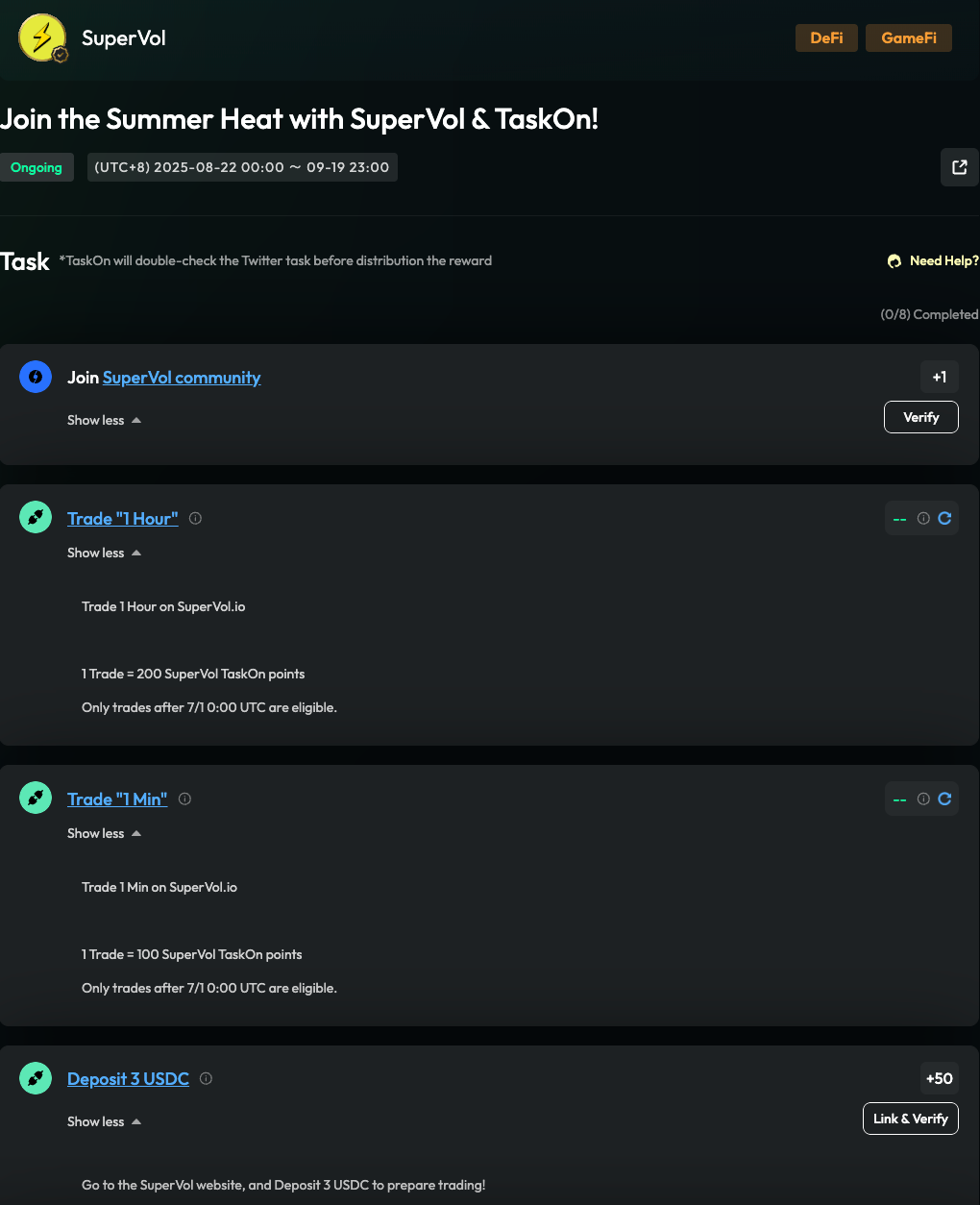
2. Kana Labs: Narrative-Driven TGE Preheating
On the eve of TGE, Kana Labs launched a series of Quests on TaskOn, achieving precise rewards and community celebrations through weeks of task challenges. Integrating brand narratives into the task process allows users to establish emotional connections through participation.
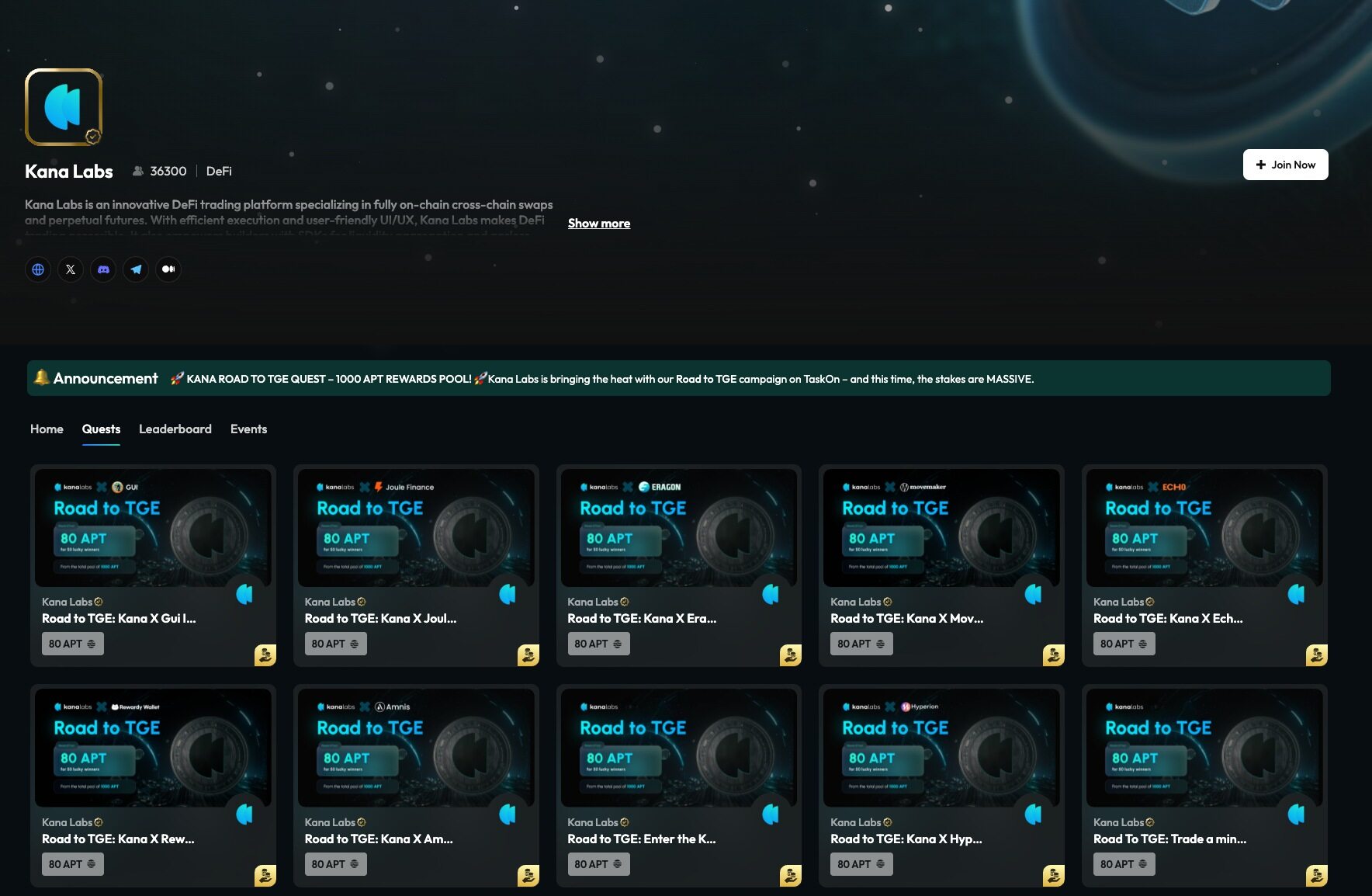
3. Mamabull: Deep Integration of Community and Quests
Using TaskOn's GTC white-label service, Mamabull directly embeds Quests into its official website, triggering user login behavior frequently through Meme culture and daily tasks, achieving efficient monetization of attention and community retention.
Data shows that its GTC community has over 65,000 users, 25,000 Telegram members, and a single on-chain task participation rate of 13,000.
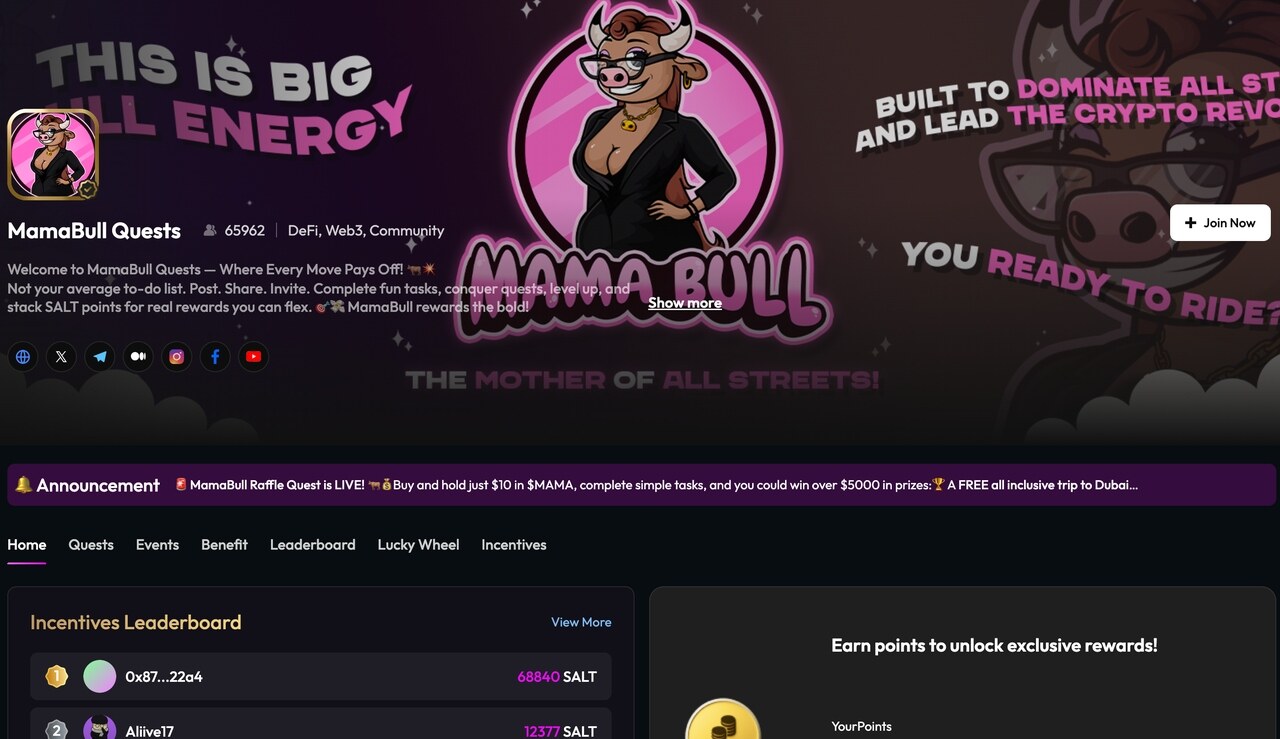
4. Spring Bloom: Scale Effect of TaskOn's Quarterly Activities
As a joint event of TaskOn, the latest Spring Bloom gathered 54 projects, with a total prize pool exceeding 24,000 USDT, plus additional project token rewards, attracting over 900,000 users to participate, showcasing the platform's strong traffic aggregation and distribution capabilities.
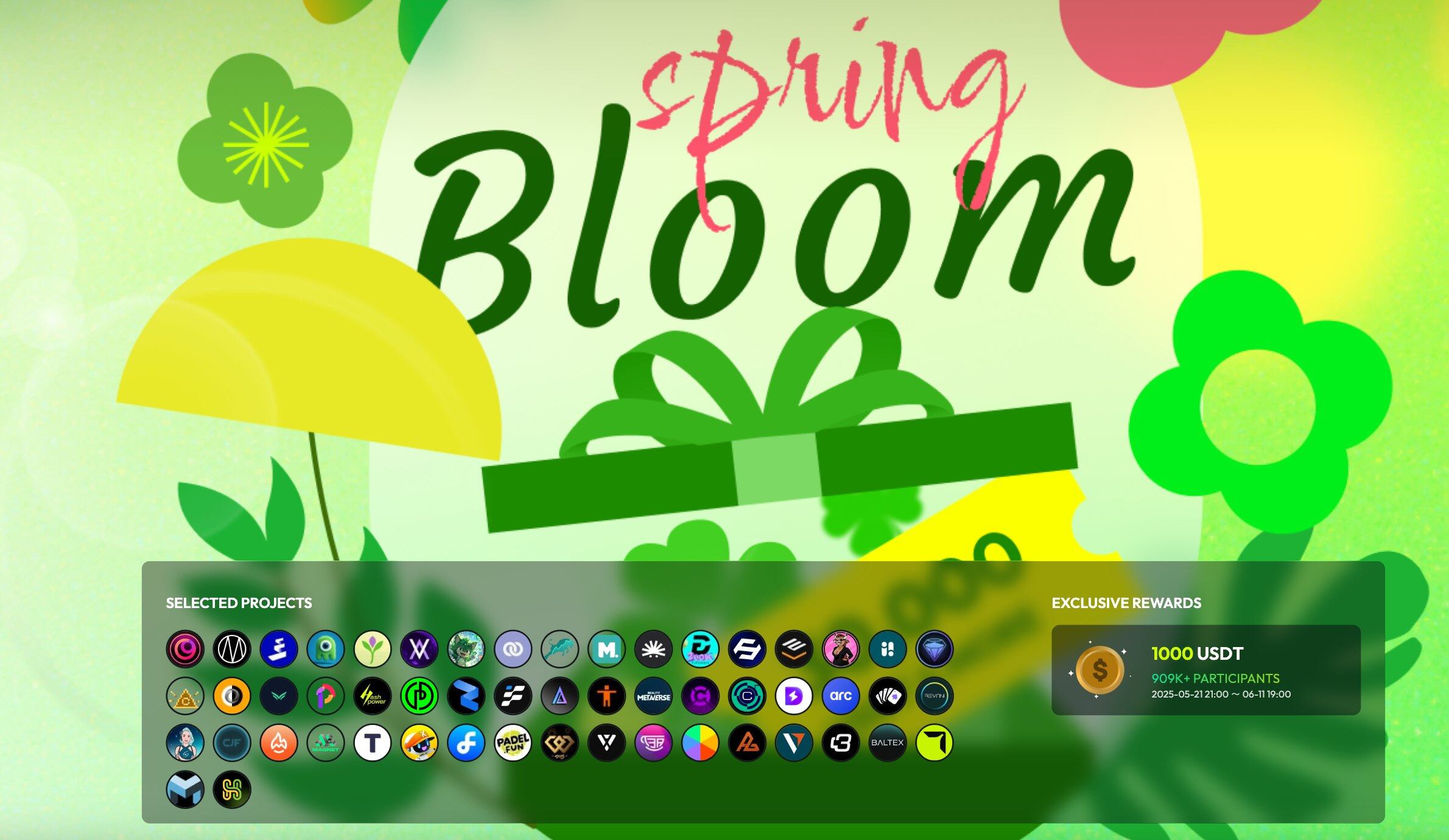
For most project parties, if they cannot precisely set up Quests, they can explore the highly flexible task templates provided by TaskOn, which support on-chain/off-chain combinations and targeted specific groups, helping project parties build multi-level task systems within 15 minutes. They also launched a "one-click deployment" template, greatly reducing the startup and operational threshold for Quests.
Conclusion
In the current Web 3 landscape, Quests have far exceeded the scope of marketing tools—just as Meme culture has become the spiritual torch of the Web 3 revolution, Quests are also growing into the core infrastructure for community development and traffic growth. The high growth potential of task platforms continues to redefine the growth paradigm of the Web ecosystem. Effectively utilizing Quests will become the sharpest operational blade for every Web 3 project.
免责声明:本文章仅代表作者个人观点,不代表本平台的立场和观点。本文章仅供信息分享,不构成对任何人的任何投资建议。用户与作者之间的任何争议,与本平台无关。如网页中刊载的文章或图片涉及侵权,请提供相关的权利证明和身份证明发送邮件到support@aicoin.com,本平台相关工作人员将会进行核查。




